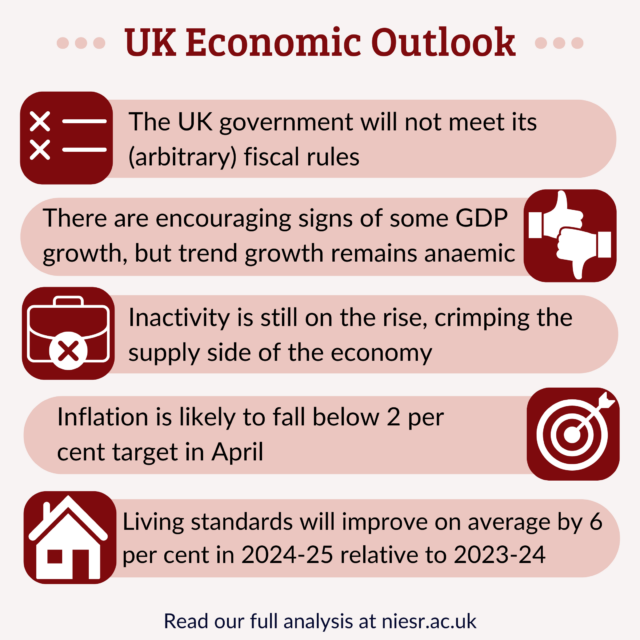- Home
- Publications
- Examining Rising Inactivity And NHS Waiting Times
Examining Rising Inactivity and NHS Waiting Times
The rise in economic inactivity has played a frontline role in labour market conditions since the pandemic. While part of this rise can be explained by Covid itself, such as people using lockdowns as an opportunity to re-enter higher education, inactivity has not returned to pre-pandemic levels four years later. Chief among the explanations is ill-health (both temporary and long-term), which has remained at an elevated level since Covid. As of the end of 2023, 71 per cent of the growth in total inactivity since the pandemic can be attributed to ill-health.
 Pub. Date
Pub. Date
 Pub. Type
Pub. Type

Authors
Related Themes
Productivity, Trade, and Regional EconomiesTags
Journal
National Institute UK Economic Outlook, No. 14, Vol. Series A
Issue
Spring 2024
While many explanations have been provided attempting to explain why this is, one argument has questioned the potential role of higher NHS waiting lists. This seems like a possible explanation, as waiting times at an all-time high could be preventing people from receiving access to the treatment they need to remain in the labour market. This box aims to assess the evidence behind this.
There was a clear spike in both the total number of people on NHS waiting lists and those inactive due to ill-health immediately after the first lockdown in 2020 (Figure B1). While the former can be explained by a reprioritisation away from general healthcare treatment towards the Covid-19 response and the latter by the effect of the virus itself, their sustained levels since the vaccine rollout requires further examination.
Related Blog Posts

Productivity, Living Standards and Wellbeing: Comparing the UK and Australia
Eliza da Silva Gomes
Adrian Pabst
29 Apr 2024
4 min read

Exploring the Data on UK Productivity Performance
Issam Samiri
Stephen Millard
11 Dec 2023
4 min read

UK Investment Past and Prospects: A Framework for Analysis
Catherine Mann
01 Dec 2023
6 min read

Related Projects
Related News

How are the UK’s Devolved Nations Faring Ahead of the General Election?
16 May 2024
12 min read


Related Publications


A Neural Network Approach to Forecasting Inflation
09 May 2024
UK Economic Outlook Box Analysis

UK Business Investment: Economists, Managers, Financiers
25 Apr 2024
UK Productivity Commission

Related events

Investing for Growth: boosting productivity through higher public and private investment

The Outlook for the Welsh Economy

Prais Lecture with Chris Pissarides: The Future of Work and Wellbeing

A View and Prospects for British Investment

How Can We Raise Investment?

Productivity Commission Evidence Session: Examining the Role of International Investment

High Dimensional Forecasting and its Pitfalls – M. Hashem Pesaran

Finance and Growth Workshop







